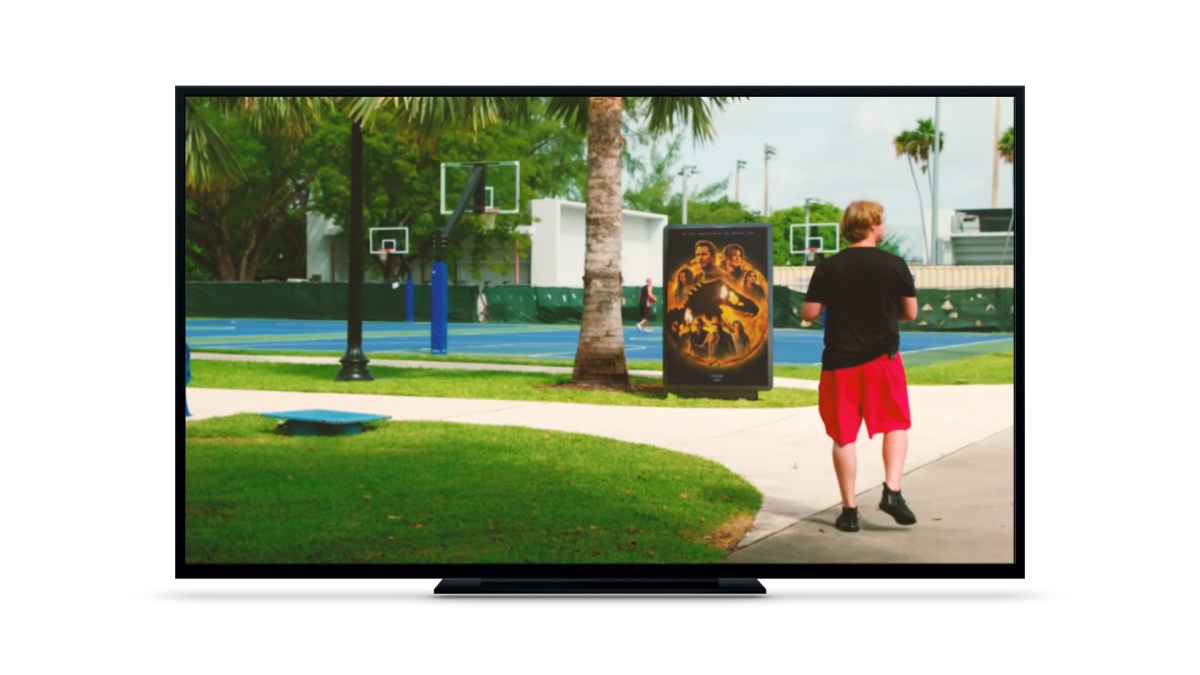Virtual Product Placement: The Newest Upstart in TV. Find Out How!
Traditional media’s ad rates are dropping, and the companies that create the fiction that millions of people read every day must come up with a new business plan. Every major broadcaster has launched an on-demand service, contributing to the growing trend of subscription services. Thus, video streaming services with advertising are set to replace traditional networks. The way brands are integrated into digital content is being revolutionized by virtual product placement. With the help of AI-driven technology, marketers can effectively and versatilely engage with their target audience. It’s critical to watch where virtual product placement takes the advertising industry, as studies reveal that consumers prefer in-content advertising 7 times over traditional ad formats. But for many, it remains shrouded in mystery, so let’s explore some insights into the trend.
What is Virtual Product Placement?
Marketers are always looking for new and creative ways to promote their brands and products in the digital world of today. Virtual Product Placement (VPP) is one such technology that has become quite popular. Using AI technology, VPP dynamically inserts a brand into digital content, such as products, signage, or videos. It gives marketers an adaptable, flexible, and powerful tool for establishing a connection with their intended audience. Placements are added to content after it has been produced, allowing for the insertion of various brands based on the audience, channel, and timing of the piece.
Most importantly, VPPs don’t appear in a disruptive way; instead, they organically fit into selected content. With this innovative strategy, brands can easily incorporate their goods into digital content, opening up new avenues for successful advertising. Because virtual product placement has the potential to monetize both new and archived content, it is causing quite a stir in the industry. Because of its adaptability, it can be used for a wide range of content formats, such as music, influencer content, SVOD/AVOD, television, and streaming services.
Inserting brands in post-production in VPP
Digital brand integration into videos has a number of clear benefits. It can be far more flexible and less expensive than handling each product by hand. At a time when viewers are adamantly rejecting commercials and other disruptions to their video binges, it might offer an extra source of income. TV branding opportunities could eventually resemble web advertising with real-time bidding for placements and precise targeting as technology advances.
Traditional product placement
For many years, there has been traditional product placement. Think about the numerous appearances of Aston Martin in classic James Bond movies. As background elements, narrative devices, or even billboard and magazine advertisements, brands are increasingly appearing on TV and film sets. Spending on product placement appears to be increasing yearly, and this strategy is still very popular. In actuality, the anticipated growth in 2022 is 14% higher than the previous year. TV continues to be the preferred medium for this kind of advertising despite the expansion of digital media; in 2021, about $2 billion will be invested in TV.
Challenges of traditional product placement
Traditional product placement presents a number of difficulties, such as being difficult to implement, hard to agree upon, and permanent once it’s been filmed. Production of content requires several months before it is aired or published, so traditional product placement is more of a long-term arrangement than a flexible one.
Read More: Developers Can Publish Instant Games Directly To Facebook At Any Development Stage
Origin of VPP
Virtual product placement allows for the smooth integration of goods into previously created content. This gives advertisers quick, adaptable, and scalable access to already-produced content. Additionally, this gives content producers the freedom to explore new revenue opportunities without having to sacrifice their production schedules or make advance commitments to brand partnerships. Rather, they can concentrate on telling t
heir story and using virtual product placement to include subtle, unobtrusive ads.
Benefits of Virtual Product Placement
Viewer Attention, Flexibility, and Simplicity
A further factor in the significance of virtual product placement in today’s media environment is the evolution of viewer attitudes and behaviors. Creating a positive user experience is the main goal. Viewers of traditional TV are dwindling. Naturally, viewers gravitate toward media platforms that provide more user choice and freedom along with minimal or nonexistent intrusive advertising. While only 12% of consumers said they enjoyed traditional TV advertisements, a remarkable 79% of consumers responded favorably to VPP, according to Kantar research.
Virtual product placement is easier to use and more adaptable than traditional methods. Brands may quickly modify their placements to correspond to particular interests, demographics, and content themes. Because of its adaptability, targeted advertising can effectively reach its target market. Furthermore, virtual product placements fit in perfectly with the selected content, enhancing the viewer’s experience without interfering.
Seizing new advertising opportunities
Virtual product placement is preferred by viewers. In-content advertisements are also shown to be more memorable than traditional TV commercials. Through virtual product placement, advertisers can increase their audience reach and level of engagement. Products can be strategically positioned within well-liked digital content to give brands greater exposure and association with well-known figures or popular shows. With this strategy, brands can improve their own brand awareness and image by taking advantage of the popularity and audience loyalty that digital content already enjoys. When compared to other advertising formats, virtual product placement shows impressive results in terms of ad awareness, brand awareness, favorability, and consideration, according to research from Kantar.
Virtual product placement creates a real impact
On the other hand, virtual product placement reaches viewers when they are deeply engaged with the content they have selected, whereas many people ignore or skip ad breaks. Virtual product placement has the power to connect products and brands with slow-moving characters or compelling narratives that resonate strongly with their target market, influencing their purchasing decisions. There is no danger of virtual product placement occurring too frequently because they are relevant to the media content and do not interfere with the story. For example, it doesn’t feel excessive to feature a cereal brand in every kitchen scene or a makeup brand in every bedroom shot. Viewers can thus see repeated product shots and maintain a positive brand sentiment.
Read More: Meta Announces Five New Lead Generation, AI-Powered Tools for FB, IG
Driving Brand Integration and Consumer Engagement
VPP’s smooth integration strengthens the bonds between consumers and brands. Marketers can create an immersive experience that improves brand recall and recognition by matching products with pertinent content. Digital content that subtly incorporates products fosters a natural association. It increases the likelihood that viewers will interact with and remember the brand. This type of advertising uses visual cues and storytelling to capture viewers and encourage meaningful brand interactions.
Measuring success and ROI
Measuring the effectiveness and return on investment (ROI) of VPP is critical, just like with any marketing campaign. Marketers are able to assess the effectiveness of virtual product placements in terms of reach, engagement, and conversion metrics. They can utilize sophisticated analytics and tracking tools. The utilization of data-driven methodology facilitates the ongoing enhancement and improvement of virtual product placement tactics, guaranteeing optimal efficacy and return on investment.
Drawbacks to virtual product placement
Integration and authenticity
It is imperative to ensure that virtual products are seamlessly integrated into the content while maintaining authenticity. The audience’s opinion may be negatively impacted if the placement appears forced or out of place. Striking a balance between advertising goals and upholding authenticity can be facilitated by collaboration between content producers and advertisers.
Evolving technology and trends
Trends in media consumption and quickly advancing technology have an impact on virtual product placement. Keeping abreast of new platforms, technologies, and formats is essential to making the most of virtual product placement. Furthermore, it guarantees long-term success by routinely evaluating and modifying strategies to conform to changing trends.
Amazon’s Virtual Product Placement
Amazon tested a novel approach to allow brands to run advertisements on its original programming. Reacher, Jack Ryan from Tom Clancy, Leverage: Redemption, and other television series were among the first to take part in Amazon’s Virtual Product Placement beta program. The company’s new CGI-powered product placement technology produced promising results. In the Amazon series Bosch, the bag of M&Ms was digitally added to a bowl on a table.

Image credit- Fast Company
Peacock TV
A digitally inserted advertising strategy was also announced by Peacock. The purpose of the new in-scene advertisements is to increase commercial opportunities by seamlessly integrating messaging and/or products with content during post-production to place ads during customer-relevant scenes.

Image credit- TechCrunch
Final words
VPP promotes consumer engagement, improves brand integration, and creates new avenues for advertising. Virtual product placement will definitely become more and more important in marketing as the digital landscape develops. Furthermore, it appears that the technological foundation of VPP is already remarkably strong. This is based on the swift rise of a few highly inventive experts. Without a doubt, content owners will be searching for new ways to generate revenue. It is possibly more so than at any other point since the start of digitalization, in a fragmented media landscape where generational shifts present a particularly big challenge.
Read More: Indian Gaming Firms are Eyeing the Brazilian Market. Explore Why!


